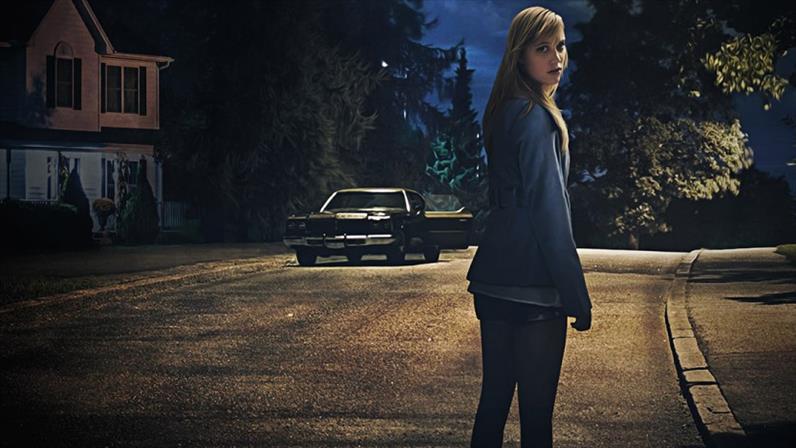
It Follows (2014) / Horror
MPAA Rated: R for disturbing violent and sexual content including graphic nudity, and language
Running Time: 100 min.Cast: Maika Monroe, Keir Gilchrist, Jake Weary, Daniel Zovatto, Olivia Luccardi, Lili Sepe
Director: David Robert Mitchell
Screenplay: David Robert Mitchell
Review published March 30, 2015
 Writer-director
David Robert Mitchell's (The Myth of the American Sleepover)
sophomore feature effort is an homage of sorts to horror films of the
late 1970s and early 1980s, especially
Halloween, The Shining and its ilk. No, this isn't a
slasher film in plot, but rather, it's the form that Mitchell is
emulating more so than the content, which will be especially of appeal
for those who prefer creepy atmospherics over gory depictions of
dismemberment. Utilizing a synthesized score and throwback
vehicles and attitude (the time period is murky; a few modern gadgets
betray its decades-old feel), the film is mostly an exercise in genre
exploration above all else, as its director is more interested in
using music and visuals to cast you in a state of nervous
anticipation. It's not an overt scare-fest, but it is certainly unnerving for
the duration, and though it raises more questions than answers, it is
one of those films that manages to hold your attention throughout,
which is a great deal more than one can say about the vast majority of
modern horror films.
Writer-director
David Robert Mitchell's (The Myth of the American Sleepover)
sophomore feature effort is an homage of sorts to horror films of the
late 1970s and early 1980s, especially
Halloween, The Shining and its ilk. No, this isn't a
slasher film in plot, but rather, it's the form that Mitchell is
emulating more so than the content, which will be especially of appeal
for those who prefer creepy atmospherics over gory depictions of
dismemberment. Utilizing a synthesized score and throwback
vehicles and attitude (the time period is murky; a few modern gadgets
betray its decades-old feel), the film is mostly an exercise in genre
exploration above all else, as its director is more interested in
using music and visuals to cast you in a state of nervous
anticipation. It's not an overt scare-fest, but it is certainly unnerving for
the duration, and though it raises more questions than answers, it is
one of those films that manages to hold your attention throughout,
which is a great deal more than one can say about the vast majority of
modern horror films.